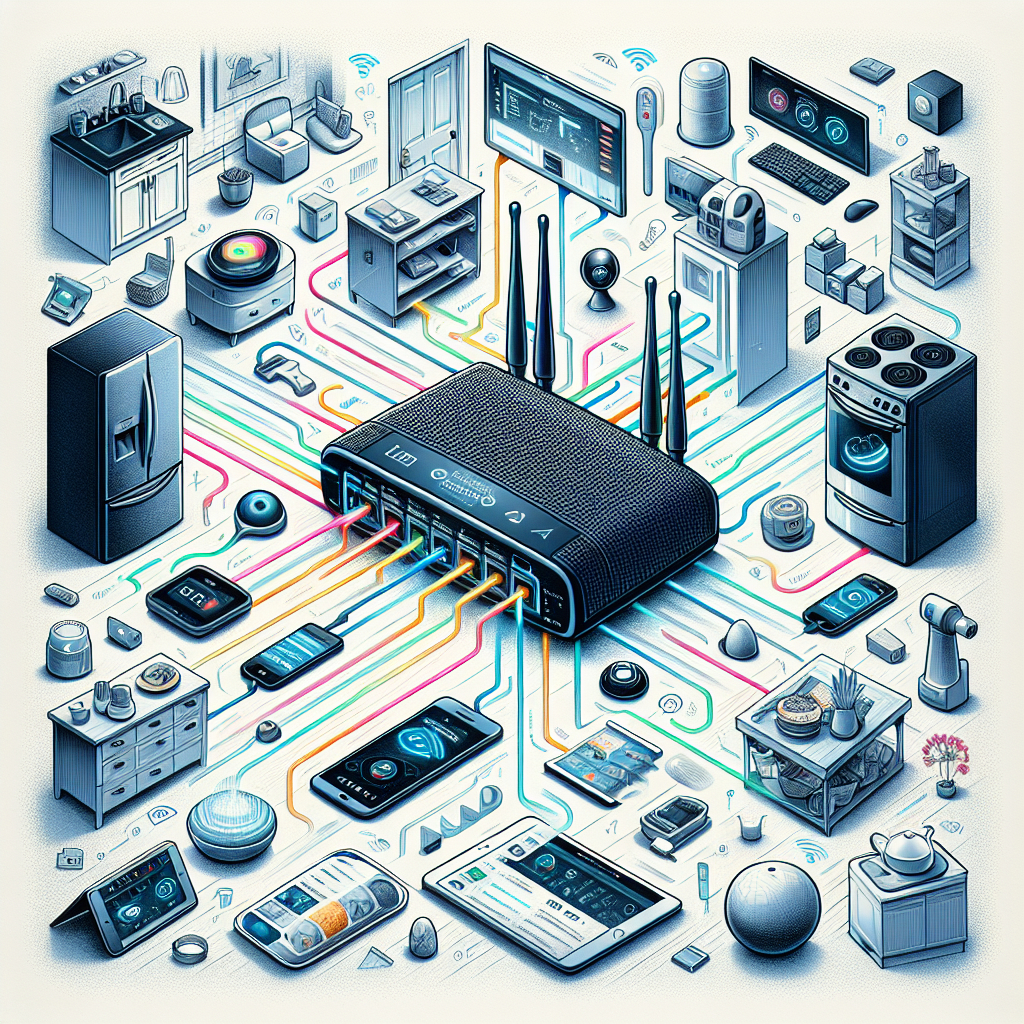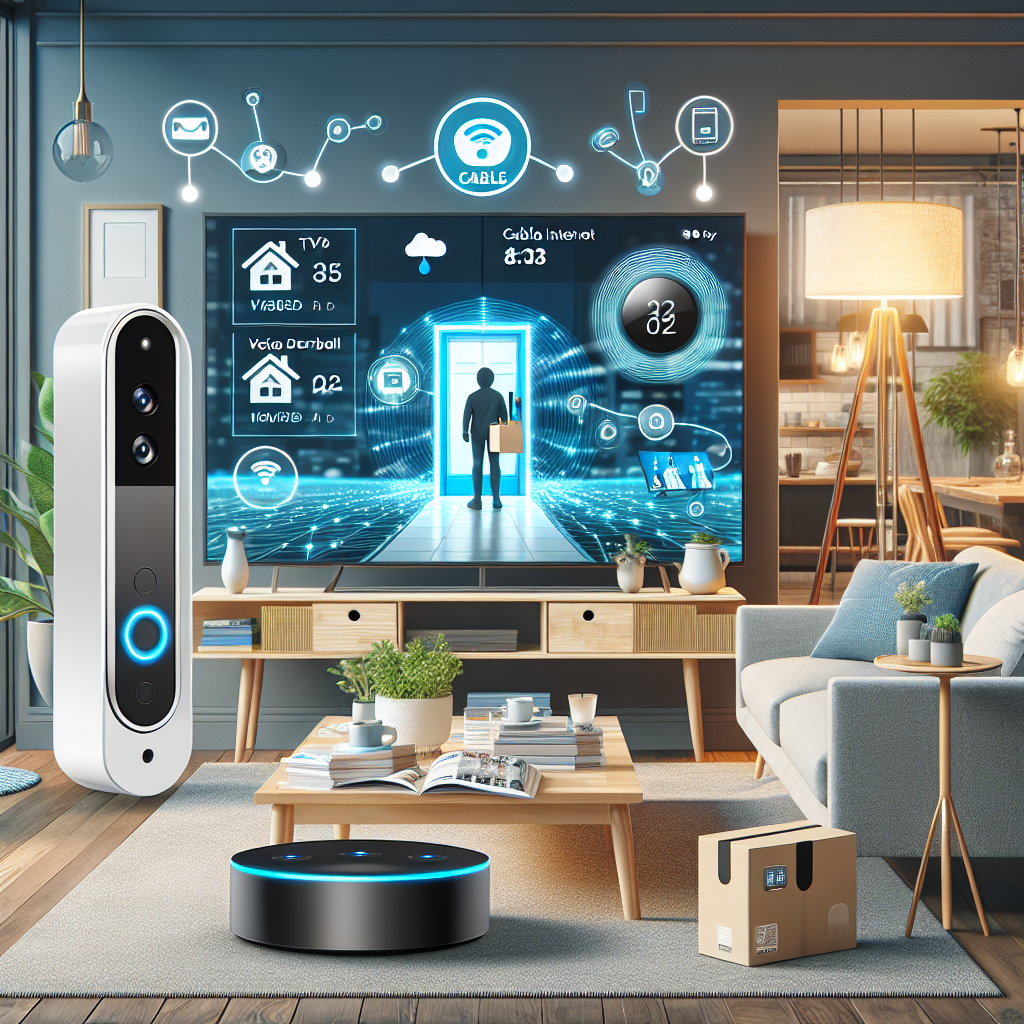In our modern world, the rise of smart home devices has revolutionized how we interact with and control our living spaces. From smart thermostats to security cameras, these devices rely on a stable and high-speed internet connection to function effectively. One of the best options for connecting your smart home devices is through cable internet. Cable internet offers fast and reliable connectivity, perfect for ensuring that your devices operate seamlessly and without interruption. In this article, we will explore the numerous benefits of using cable internet for your smart home devices, highlighting its efficiency, speed, and overall convenience.
Understanding Cable Internet for Smart Homes
- Definition of cable internet
Cable internet is a type of internet connection that utilizes the same coaxial cable lines that deliver cable television. It provides high-speed internet access to homes and businesses through the same infrastructure used for cable TV. - How cable internet works
Cable internet works by transmitting data over a coaxial cable line that is connected to a modem in the user’s home. The modem then communicates with the internet service provider (ISP) through the cable line to access the internet. This connection allows for faster and more stable internet speeds compared to traditional dial-up or DSL connections. - Benefits of cable internet for smart home devices
- High-speed connectivity: Cable internet offers high-speed internet access, which is essential for smart home devices to function efficiently. Whether it’s streaming content, controlling smart appliances, or monitoring security cameras, a fast internet connection is crucial for a seamless smart home experience.
- Reliability: Cable internet is known for its reliability and consistency. This is important for smart home devices that rely on a stable internet connection to operate effectively. With cable internet, users can trust that their smart devices will stay connected without interruptions.
- Bandwidth capacity: Cable internet provides ample bandwidth capacity, allowing multiple smart devices to connect to the network simultaneously without compromising speed or performance. This is advantageous for households with numerous smart home gadgets that require internet access.
- Compatibility: Cable internet is compatible with a wide range of smart home devices, including smart thermostats, security systems, lighting controls, and entertainment systems. Its widespread availability and compatibility make it a suitable choice for powering a connected smart home ecosystem.
Factors to Consider for Smart Home Connectivity
When setting up smart home devices, several key factors need to be taken into consideration to ensure optimal connectivity and performance:
- Bandwidth Requirements for Smart Devices
Smart home devices vary in their bandwidth requirements depending on the type of data they transmit and receive. High-definition video cameras, for example, require more bandwidth compared to smart thermostats or light bulbs. Ensuring that your cable internet connection can handle the simultaneous data streams from multiple devices is crucial for a seamless smart home experience.
- Stability and Reliability of the Internet Connection
The stability and reliability of the internet connection play a significant role in the performance of smart home devices. Cable internet, known for its consistent speeds and reliable connectivity, is well-suited for smart homes that rely on continuous data transmission. A stable internet connection helps prevent interruptions in device communication and ensures that commands are executed promptly.
- Compatibility with Smart Home Systems
Compatibility between your cable internet service and smart home systems is essential for seamless integration and operation. Some smart home devices may require specific network configurations or protocols to function correctly. Ensuring that your cable internet service meets these requirements can help avoid compatibility issues and streamline the setup process for your smart home devices.
Advantages of Cable Internet for Smart Home Devices

– High-speed internet for seamless connectivity
Cable internet offers significantly faster speeds compared to other types of connections like DSL or satellite. This high-speed internet allows smart home devices to communicate and function smoothly without delays. Whether it’s streaming content, controlling smart appliances, or monitoring security cameras, cable internet ensures a seamless connectivity experience.
- Consistent performance for multiple devices
One of the key advantages of cable internet for smart home devices is its ability to support multiple devices simultaneously without compromising performance. With the increasing number of smart devices in modern homes, such as smart speakers, thermostats, and lighting systems, cable internet provides the bandwidth needed to accommodate these devices without slowing down the network.
- Lower latency for real-time smart device interactions
Low latency is crucial for real-time interactions between smart home devices. Cable internet offers lower latency compared to other types of connections, making it ideal for activities that require instant responses, such as home security systems or smart home automation. This reduced latency ensures that commands are executed promptly, enhancing the overall efficiency and effectiveness of smart home devices.
Challenges and Solutions for Using Cable Internet with Smart Devices
Potential network congestion issues
One of the primary challenges of using cable internet for smart home devices is the potential for network congestion. With a multitude of devices connected to the same network, the bandwidth can become overwhelmed, leading to slow speeds and lagging connections.
Solutions:
– Implementing a quality of service (QoS) system to prioritize smart home device traffic over other less critical data.
– Upgrading to a higher speed internet plan to accommodate the increased demand from smart devices.
– Utilizing a dual-band router to separate smart home devices onto a dedicated network.
Implementing network management solutions
Managing the various smart devices connected to a cable internet network can be a daunting task. Without proper network management solutions in place, it can be challenging to ensure all devices are functioning optimally and securely.
- Utilizing network monitoring tools to keep track of device activity and performance.
- Setting up guest networks for visitors to prevent them from accessing sensitive smart home data.
- Regularly updating firmware and security protocols on routers and smart devices to mitigate vulnerabilities.
Ensuring data security for smart home devices
Data security is a crucial aspect of using cable internet for smart home devices. With the potential for hackers to exploit vulnerabilities in connected devices, ensuring robust security measures is imperative for safeguarding sensitive information and maintaining privacy.
- Enabling encryption protocols such as WPA2 or WPA3 on the router to secure data transmissions.
- Installing firewall protection to monitor and block suspicious network activity.
- Using strong, unique passwords for each smart device to prevent unauthorized access.

Maximizing Cable Internet Performance for Smart Homes
When it comes to optimizing cable internet for smart home devices, there are several key strategies that can significantly enhance performance and ensure seamless connectivity throughout the household. To make the most of cable internet for smart homes, it is crucial to consider the following:
- Placement of Wi-Fi routers for optimal coverage:
Proper placement of Wi-Fi routers plays a crucial role in ensuring comprehensive coverage and minimizing dead zones within the home. Placing the router in a central location can help distribute the signal more evenly, reducing interference and improving connectivity across multiple devices. Additionally, elevating the router to a higher position can help extend the range and enhance signal strength, especially in multi-story homes or larger living spaces. - Upgrading to DOCSIS 3.1 for faster speeds:
For smart homes with a high demand for bandwidth-intensive activities such as streaming 4K content, online gaming, or video conferencing, upgrading to a DOCSIS 3.1 modem can offer significant speed improvements and enhance overall internet performance. DOCSIS 3.1 technology enables faster download and upload speeds, lower latency, and improved network reliability, making it an ideal choice for households with multiple smart devices connected simultaneously. - Utilizing mesh networks for extended coverage:

In cases where traditional Wi-Fi routers struggle to provide adequate coverage throughout the entire home, implementing a mesh network can be a game-changer. Mesh networks consist of multiple interconnected nodes that work together to create a seamless blanket of Wi-Fi coverage, eliminating dead spots and ensuring consistent connectivity across all areas of the house. By strategically placing mesh nodes in different rooms, smart home devices can seamlessly transition between nodes, maintaining a strong and reliable connection regardless of their location within the home.
Future Trends in Cable Internet for Smart Home Integration
As technology continues to advance at a rapid pace, the evolution of cable internet is paving the way for seamless integration with a wide array of smart home devices. This integration holds the potential to revolutionize the way we interact with our living spaces, offering unprecedented levels of convenience and efficiency.
Evolution of Cable Internet Technology
Cable internet providers are constantly enhancing their infrastructure to deliver faster speeds and more reliable connections. This evolution in technology is crucial for supporting the increasing number of smart devices in homes, ensuring a robust network that can handle the demands of modern smart home systems.
Integration with Emerging Smart Home Devices
With the rise of smart home devices such as thermostats, lighting systems, security cameras, and voice assistants, the need for a stable and high-speed internet connection is more important than ever. Cable internet offers the bandwidth necessary to support these devices, allowing them to communicate seamlessly and operate efficiently.
Potential for Increased Automation and Efficiency
By leveraging cable internet for smart home integration, homeowners can experience a new level of automation and efficiency in their daily lives. From remotely controlling devices to setting up complex routines and schedules, cable internet enables smart home systems to work together harmoniously, enhancing convenience and optimizing energy usage.
In conclusion, the future trends in cable internet for smart home integration are promising, offering a glimpse into a more connected and intelligent living environment where technology works in harmony to simplify tasks and enhance quality of life.
FAQs for Exploring the Benefits of Cable Internet for Smart Home Devices
What is cable internet and how does it work with smart home devices?
Cable internet is a type of internet connection that uses a cable modem and coaxial cable to provide high-speed internet access. This connection can easily support smart home devices such as smart thermostats, security cameras, and voice assistants. Cable internet offers reliable and fast connectivity, making it a great choice for connecting multiple devices in a smart home setup.
What are the advantages of using cable internet for smart home devices?
One of the main advantages of using cable internet for smart home devices is its speed and reliability. Cable connections typically offer faster download and upload speeds compared to other types of internet connections, which is crucial for smart devices that require constant connectivity. Additionally, cable internet has low latency, ensuring a seamless experience when interacting with smart home devices.
Can I use cable internet for multiple smart home devices at once?
Yes, cable internet is well-suited for supporting multiple smart home devices simultaneously. With its high bandwidth capabilities, cable internet can easily handle the data transmission requirements of various smart devices operating in a smart home environment. Whether you have smart lights, thermostats, security cameras, or other IoT devices, cable internet can efficiently connect and communicate with them all.
Is cable internet secure for smart home devices?
Cable internet is generally considered secure for smart home devices, especially when combined with proper cybersecurity measures. To enhance security, you can set up a strong password for your Wi-Fi network, enable encryption protocols, and regularly update the firmware of your smart devices. By taking these precautions, you can safeguard your smart home network from potential cyber threats.
Are there any drawbacks to using cable internet for smart home devices?
While cable internet offers many benefits for smart home devices, one potential drawback is the possibility of signal interference or congestion during peak usage periods. This can result in slower speeds or occasional connectivity issues. However, by choosing a reputable internet service provider and opting for a high-speed cable internet plan, you can minimize the impact of these potential drawbacks.